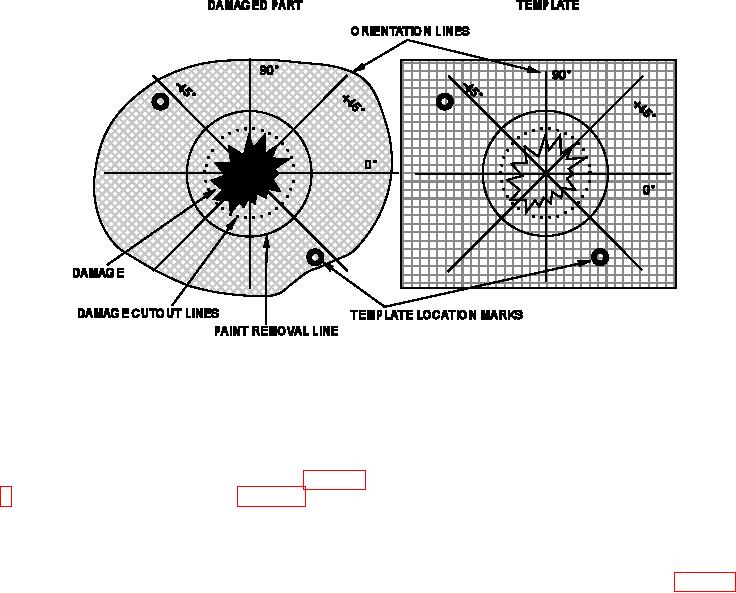
TM 1-1500-204-23-11
Figure 5-7. Typical Orientation Markings
f. Damage Orientation Marking. Follow these
preparation process and will be visible upon
steps to determine and mark damage orientation. The
repair patch installation.
following tools and equipment are required: pencil or
permanent marker, a straight edge, a compass or
(3) Repeat the marking process for a 45 and 90
circle template, and template ilm. Refer to Appendix
degree reference line.
typical orientation markings.
(4) Using the pencil or marker and the appro-
priate marking aids (compass, straightedge,
NOTE
etc.), mark the repair area with the dam-
age removal cutout line, scarf width line, and
Do not use wax, grease or oil-based markers
coating removal perimeter (see igure 6-1 for
on composite materials. Do not use graphite
paint removal area).
pencils on aluminum.
(5) If a repair area template is used, draw tem-
(1) Determine a basic reference direction to
plate location marks on the repair surface
be used for basic repair and NDI reference
using a pencil or marker. These marks
coordinates. This is typically along a primary
should be placed outside the repair area
load carrying member such as a spar, in the
where they are not likely to be removed.
0 degree direction; however, it may be arbi-
The markings will be used for orienting the
trary. Consult the system speciic technical
template on the repair surface.
manual or engineering authority for further
guidance.
(6) Cut the template ilm large enough to cover
the entire repair area and include suficient
(2) Using a straightedge and a pencil or marker,
area outside the repair zone for the place-
draw an orientation line in the reference
ment of template location marks. Center the
direction through the repair zone. The orien-
template over the repair area and tape in
tation lines should pass through the center
place.
point of the repair area. When the repair
area is an odd shape, use your best judg-
ment when determining the center of the
(7) Using the pencil or marker, transfer the tem-
repair area. The orientation lines should
plate location marks on the repair part to the
extend far enough beyond the repair area to
template ilm.
ensure they are not removed by the surface

